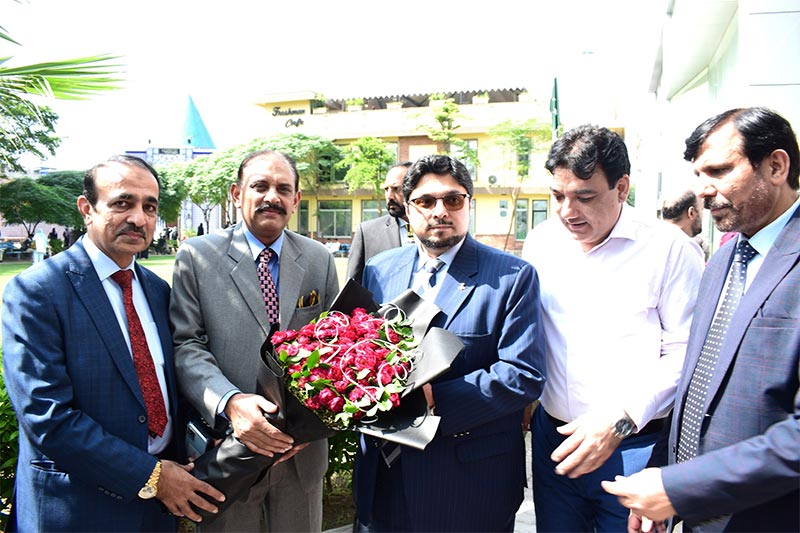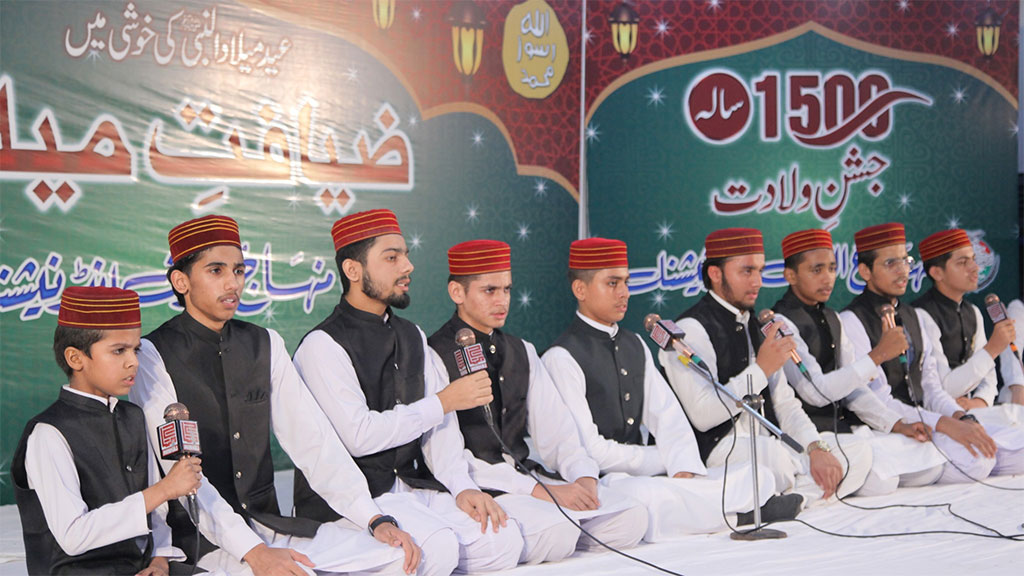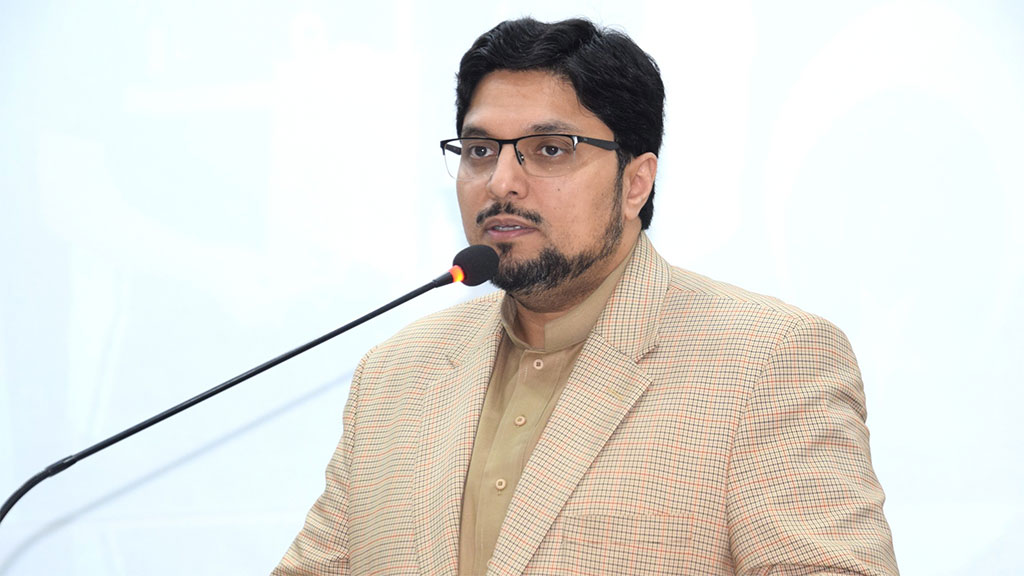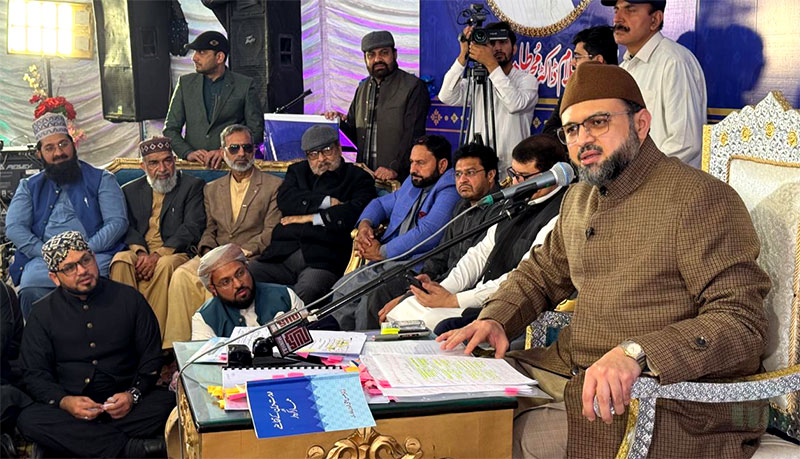Footprints: Revolution Via A Video Link
 AT
3pm on Sunday afternoon, the construction site of the PML-N’s Metro Bus service
that runs through Rawalpindi’s Murree Road looks abandoned. A long line of concrete
pillars run all the way to Islamabad, iron rods jutting into a blinding sky.
AT
3pm on Sunday afternoon, the construction site of the PML-N’s Metro Bus service
that runs through Rawalpindi’s Murree Road looks abandoned. A long line of concrete
pillars run all the way to Islamabad, iron rods jutting into a blinding sky.
The midday heat rises in waves, transforming the broken roads and industrial machines into a shimmering, monochromatic capitalist dystopia.
At first, it appears as though the heat is keeping the traffic, the people and the construction workers away. That is, until you see riot police sweating in bullet-proof jackets behind glass shields.
The police are here to ensure security at the Pakistan Awami Tehreek’s (PAT) protest rally scheduled for May 11. “Right now, in more than 60 cities across Pakistan,” booms a PAT party worker into a microphone, “people are coming out in the streets to bring down a corrupt system.”
The crowd at Chandni Chowk is perfectly organised. The protest at the construction site, however, fits neatly into the pitch that the ruling PML-N took to the media in anticipation of a show of force by Professor Tahir ul Qadri’s PAT.
Perhaps mindful of the PAT’s long march last year demanding a “change of system” before general elections — a march that effectively crippled the capital — a nervous PML-N juxtaposed in a TV ad images of development initiatives it had undertaken with those of riots and anarchy. The question it posed: what would Pakistanis rather have — development or anarchy? The subtext: will Pakistanis, then, support parties ushering in progress or forces bent on derailing it?
This is a question I ask of a participant at the protest now. “We watch the outcomes,” says a frail Hakeem Mohammad Ajmal, 68, wearing a face mask to ward off allergies. “After every five years, we find the nation more indebted, the people poorer, while the ruling classes prosper. Our struggle is not against a certain party but a corrupt system. We don’t want it even if it is built of gold bricks.”
As more and more protesters join in, flying the party tricolour, women and men gather in separate groups under the bridge. To many here, it appears, it is a family imperative to respond to “the call of the Quaid” — Shaikh-ul Islam Prof Dr Tahir ul Qadri. Parents disembark from cars with toddlers in tow.
Amongst them is Faisal Najeeb, a supply manager at a football company, who has travelled all the way from Sialkot.
“I am here to answer the call of Dr Tahir ul Qadri, to rise against the corrupt rulers of the country,” says Najeeb in accented English. He has come back from Denmark to work in Pakistan.
“They have been ruling the country under the aegis of democracy which, essentially, is a cover to further their own interests. They ignore inflation, power cuts and human rights abuses while focusing on agreements with foreign investors for kickbacks. We want a green revolution, not red. A single individual can bring it.”
But the Allama promised that change before his long march fizzled out into nothing last year, I point out. “A lot of people feel that the last gathering came to nothing but like Prof Tahir ul Qadri said, it was like an azaan — a call to prayer,” answers Aisha Raja, Faisal’s wife, who teaches English at a private school.
“You’ll see, this will be a larger gathering.”
Later in evening the dual carriageway of Murree Road between Chandni Chowk and Committee Chowk shifts and hums with a seething hive of people. For an absentee revolutionary, the Canada-based Qadri can whip up quite a frenzy. Many party supporters here hail from the Punjabi heartland, some wearing the characteristic Qadri cap.
The optics reinforce unity of commitment to a revolutionary change. The local leadership announces the names of parties and groups that have chosen this event to join the party cause, among them minority leader Jay Salik, Baba Haider Zaman of the Hazara Movement, several labour unions and leaders of the Mazdoor Kisan Movement. Thousands of party flags flutter to the martial beat of songs extolling the revolution.
By the time Dr Qadri joins the people via a video link, the crowd has thickened into a wall of bodies. Like a benign Lenin with a cap, he promises to give power back to the people through local bodies governance, quick justice, land distribution among tenants, plots and loans for house building, and the creation of 33 provinces among which, he promises, the first will be Hazara.
The resources to do all this would be the money stashed away in Swiss accounts by corrupt politicians, through ending corruption, an austerity drive, the gold and copper mines of Saindak and Rekodik, and from Gwadar Port, among others sources.
He says he has a clear plan to help realise the Pakistan of the original Quaid, Jinnah.
He reminds people of their constitutional rights, that “the ruling classes have failed to deliver to them in 42 years since independence”. Of the remaining years spent under military rule, he makes no mention.
While a majority of the women here appear to be from the urban middle and upper classes, there are those bussed in from rural areas. Among them is Rasoolan from village Lillah in Pind Dadan Khan, Jhelum district. “I have come to change the system,” says Rasoolan in colloquial Punjabi, sitting on the cobbled floor in Chandni Chowk. “We can’t afford clothes or chappals any more.”
And will the Allama deliver that, the clothes and the sandals? “Yes,” she says, nodding emphatically. “It is the others who plunder that will not.”
Source: www.dawn.com












Comments